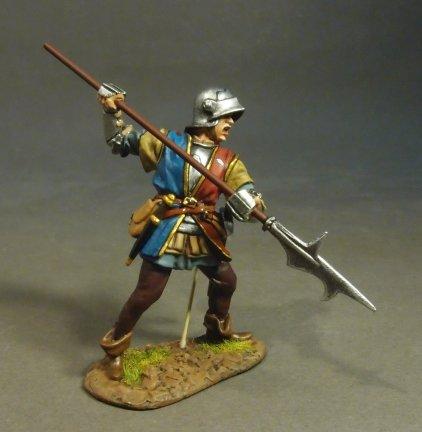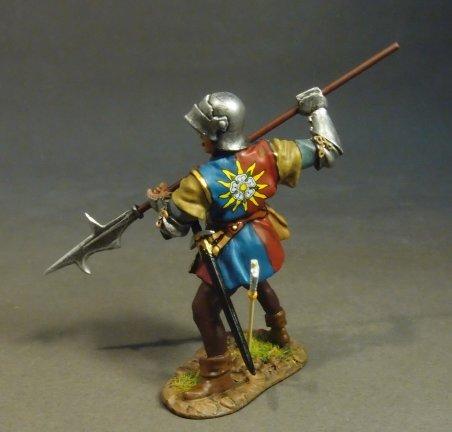Yorkist Billman, The Retinue of King Richard III, The Battle of Bosworth Field 1485, The Wars of the Roses 1455-1487—single figure
$43.00
Item Number: RYORK-07
Yorkist Billman, The Retinue of King Richard III, The Battle of Bosworth Field 1485, The Wars of the Roses 1455-1487—single figure
THE WARS OF THE ROSES 1455-1487
The Wars of the Roses were a series of dynastic wars for the throne of England. They were fought between supporters of two rival branches of the royal House of Plantagenet, the houses of Lancaster and York. They were fought in several sporadic episodes between 1455 and 1487, although there was related fighting before and after this period. The conflict resulted from social and financial troubles that followed the Hundred Years' War, combined with the mental infirmity and weak rule of Henry VI, which revived interest in the alternative claim to the throne of Richard, Duke of York.
The final victory went to a claimant of the Lancastrian party, Henry Tudor, who defeated the last Yorkist king, Richard III, at the Battle of Bosworth Field. After assuming the throne as Henry VII, Henry Tudor married Elizabeth of York, the eldest daughter and heiress of Edward IV, thereby uniting the two claims. The House of Tudor ruled England and Wales until 1603.
THE BATTLE OF BOSWORTH FIELD, 1485
The Battle of Bosworth (or Bosworth Field) was the last significant battle of the Wars of the Roses, the civil war between the Houses of Lancaster and York that raged across England in the latter half of the 15th century. Fought on 22 August 1485, the battle was won by the Lancastrians. Their leader Henry Tudor, Earl of Richmond, by his victory became the first English monarch of the Tudor dynasty. His opponent, Richard III, the last king of the House of York, was killed in the battle. Historians consider Bosworth Field to mark the end of the Plantagenet dynasty, making it a defining moment of English and Welsh history.
Liveries and Badges
By the time of the Wars Of The Roses, badges were of considerable importance. These along with the Livery Colours were closely associated with what was then known as Livery and Retaining (Bastard Feudalism).
The badges were rarely worn by their owners, for they were marks of ownership. They were, however, worn by his servants, house-hold men, retainers, and probably temporarily by the adherents to his cause.
So great and extensive was the use of these badges, that they were far more generally employed than the coat of arms. For where a man’s badge would be common knowledge and bear some repute throughout the kingdom, few people would know what his coat of arms looked like.
THE YORKIST ARMY
The Royalist Army was led by King Richard III.
Richard's most loyal subject was John Howard, 1st Duke of Norfolk. The duke had served Richard's brother for many years and was one of Edward IV's closer confidantes. He was a military veteran, having fought in the Battle of Towton in 1461 and served as Hastings' deputy at Calais in 1471.
Richard formed his army into three divisions or ‘battles.” The Vanguard or main “battle” was under the command of the Duke of Norfolk, the main body was led by Richard, and the rearguard under the command of the Earl of Northumberland.
Most infantry who were not archers were armed with staff weapons, notably the bill. This was a weapon derived from an agricultural implement and usually had a stabbing blade, a curved cutting surface down one side, and a hook, which was useful in pulling riders from their mounts.

